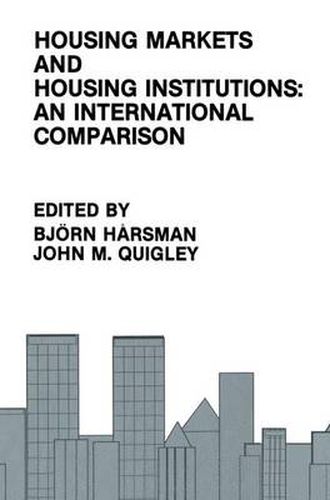Readings Newsletter
Become a Readings Member to make your shopping experience even easier.
Sign in or sign up for free!
You’re not far away from qualifying for FREE standard shipping within Australia
You’ve qualified for FREE standard shipping within Australia
The cart is loading…






This title is printed to order. This book may have been self-published. If so, we cannot guarantee the quality of the content. In the main most books will have gone through the editing process however some may not. We therefore suggest that you be aware of this before ordering this book. If in doubt check either the author or publisher’s details as we are unable to accept any returns unless they are faulty. Please contact us if you have any questions.
International comparisons of economic institutions and government poli cies are fraught with difficulties. After1he selective barriers of language and culture are overcome, differences in programs and outcomes are far more subtle than those that can be revealed by highly aggregated national data. Rela tively soft comparisons are the norm in international comparative research. This is particularly true in comparative analyses of housing and the operation of housing markets. Housing markets are local or regional in character, and the effects of government programs on market outcomes depend upon important economic characteristics of the local environment. Moreover, the institutions that influence the production, distribution, and consumption of housing differ enormously across nations. The distribution of housing and the role of the market in provision depend upon historical and social factors as well. Aggregate national data are unlikely to allow for much depth in comparisons across societies. Yet in the absence of such comparisons, the very visibility of housing may lead to inadequate or erroneous generalizations. Photographs emphasing the aesthetics of “well planned housing agglomorations or urban slums are compelling. Documen tation that middle-class households must wait in a queue for a decade to be housed is notably less graphic.
$9.00 standard shipping within Australia
FREE standard shipping within Australia for orders over $100.00
Express & International shipping calculated at checkout
This title is printed to order. This book may have been self-published. If so, we cannot guarantee the quality of the content. In the main most books will have gone through the editing process however some may not. We therefore suggest that you be aware of this before ordering this book. If in doubt check either the author or publisher’s details as we are unable to accept any returns unless they are faulty. Please contact us if you have any questions.
International comparisons of economic institutions and government poli cies are fraught with difficulties. After1he selective barriers of language and culture are overcome, differences in programs and outcomes are far more subtle than those that can be revealed by highly aggregated national data. Rela tively soft comparisons are the norm in international comparative research. This is particularly true in comparative analyses of housing and the operation of housing markets. Housing markets are local or regional in character, and the effects of government programs on market outcomes depend upon important economic characteristics of the local environment. Moreover, the institutions that influence the production, distribution, and consumption of housing differ enormously across nations. The distribution of housing and the role of the market in provision depend upon historical and social factors as well. Aggregate national data are unlikely to allow for much depth in comparisons across societies. Yet in the absence of such comparisons, the very visibility of housing may lead to inadequate or erroneous generalizations. Photographs emphasing the aesthetics of “well planned housing agglomorations or urban slums are compelling. Documen tation that middle-class households must wait in a queue for a decade to be housed is notably less graphic.